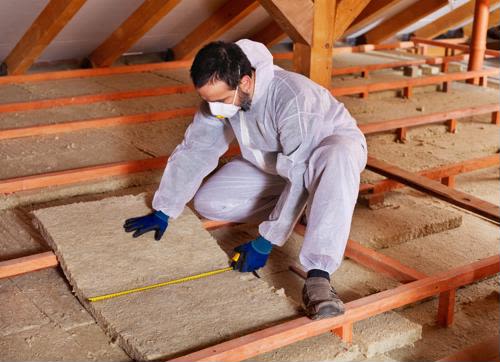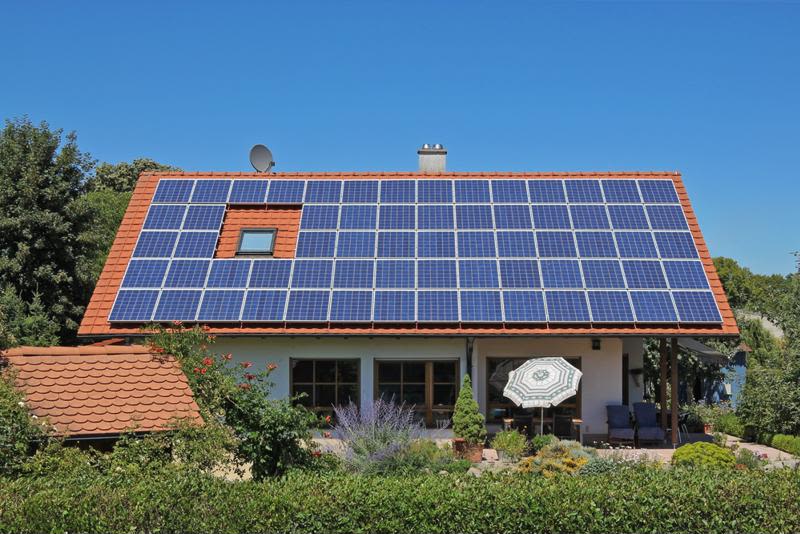- Home
- Resources
- Amerhart Insider Blog
- Project Inspiration
- How to upgrade to a more energy-efficient home
How to upgrade to a more energy-efficient home

Many parts of the U.S. deal with extreme cold during the winter months. These chills cause school closings, colds, and help make sweaters more fashionable. This season can also cause heating bills to skyrocket. While most clients cannot afford to build an entirely new house just to lower their winter energy costs, certain modifications can reduce consumption.
Building to take advantage of natural light
The sun is always a source of two things: light and heat. Home design that accounts for this can help save homeowners money during all times of the year by reducing the dependency on electrical light sources.
However, some homeowners may balk at this option because, while natural lighting and heat sound great in the winter, the summer heat is less appealing. The good news is that certain treated glass can reduce the unwanted warmth.
My Coastal Windows recommended low-e glass, which blocks UV rays and diverts external temperatures in favor of interior balance. This means warm homes in winter without sacrificing the summer cool. It also means that homeowners will be able to take advantage of the sun's natural lighting, reducing their electricity bill.
In addition to better window placement, homeowners may want to prepare to use more progressive options, like solar panels. While the convention may be to place panels facing east (to capture heat from the sun as it rises), this is not the most beneficial direction. According to to Solar Panel Tilt, homes in the northern hemisphere should always place solar panels facing true south.
While the tilt matters, every home will need a southward-facing roof or lawn space to accommodate this enhancement. Homeowners should be educated on the benefits of solar, as well as the cost of installation. A home without southward facing roofs is going to have to spend more to achieve maximum benefits.
 Some homes will need renovations before they are ready to use rooftop solar panels effectively.
Some homes will need renovations before they are ready to use rooftop solar panels effectively.
Adding an additional heat source
Some homeowners may not want to rely on one power source year-round. A propane or wood-burning fireplace can provide a source of heat that is not dependent on communal power. However, these installations are complicated projects as your clients will need to ensure that heat travels throughout the home and does not get bottled up in one room.
Additionally, homeowners should know which materials are appropriate to surround a structure like a fireplace. Despite being made of wood, shiplap actually makes for a safe and stylish way to enhance a fireplace. Of course, the material should not be used to directly line the interior walls of such a structure.
"Fiberglass is a popular form of insulation due to its ability to retain its R-value."
Switching or reinforcing insulation
By and large one of the best methods to make a home more energy-efficient in winter is to add insulation. Insulation is simply a material used to provide extra heat retention inside of a home. Having quality insulation can make a difference of hundreds of dollars every winter season. However, the installation process can be challenging and not all materials are inherently safe to work around.
Here is where your client will really appreciate your expertise and guidance.
There are many different substances that insulation can be made out of and some are more suited for moisture. Above all, you want your client getting a good R-value from their insulation material. R-value is a measurement implemented by the Department of Energy to judge the substance's thermal resistance. R-value can be affected by many factors, including temperature and moisture accumulation.
For instance, recycled denim - treated with boric acid - is catching on as an extra environmentally friendly form of insulation. According to Build Direct, it routinely performs as well as fiberglass insulation, with an average 3.5 R-value per inch. However, this method depends on air pockets inside the denim to create the insulation. If applied evenly, it works well. However this substance is not always available in flexible sizing so some will compress it in order to make it fit a job - essentially negating a portion of the positive effect.
Fiberglass tends to be among the more popular forms of insulation due to its ability to retain its R-value, even if exposed to moisture. For clients hoping to do repairs or made additional insulation installations, the DOE recommended loose-fill and blown-in as this is the easiest added, provided you have the right equipment.
Changing seasons and extreme weather patterns are challenging for homeowners. Insulation is an environmentally friendly solution that will, in the long term, lead to cost savings and a more consistent interior temperature.




















